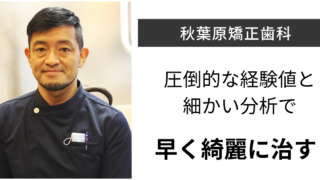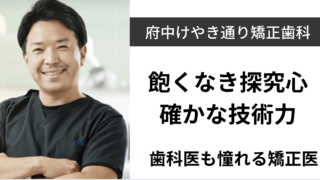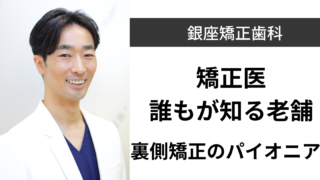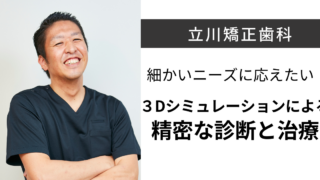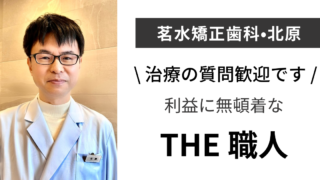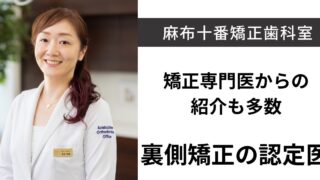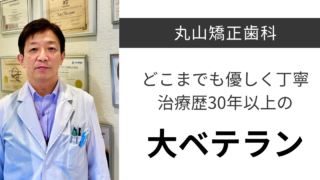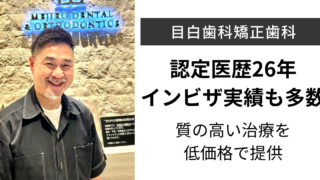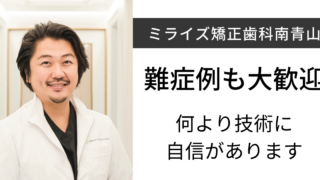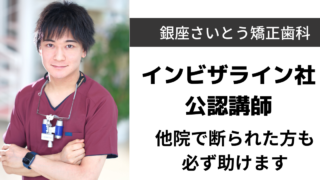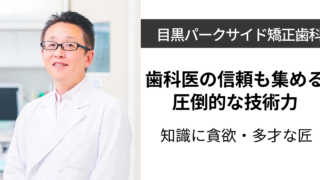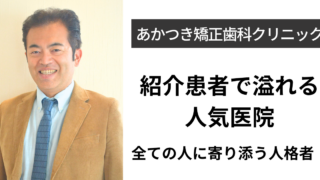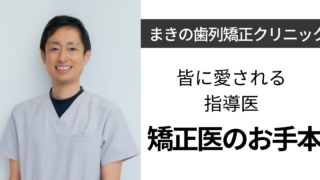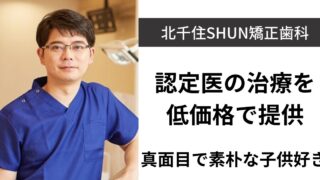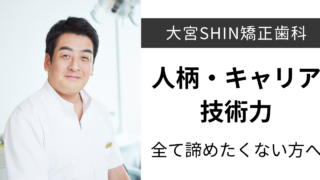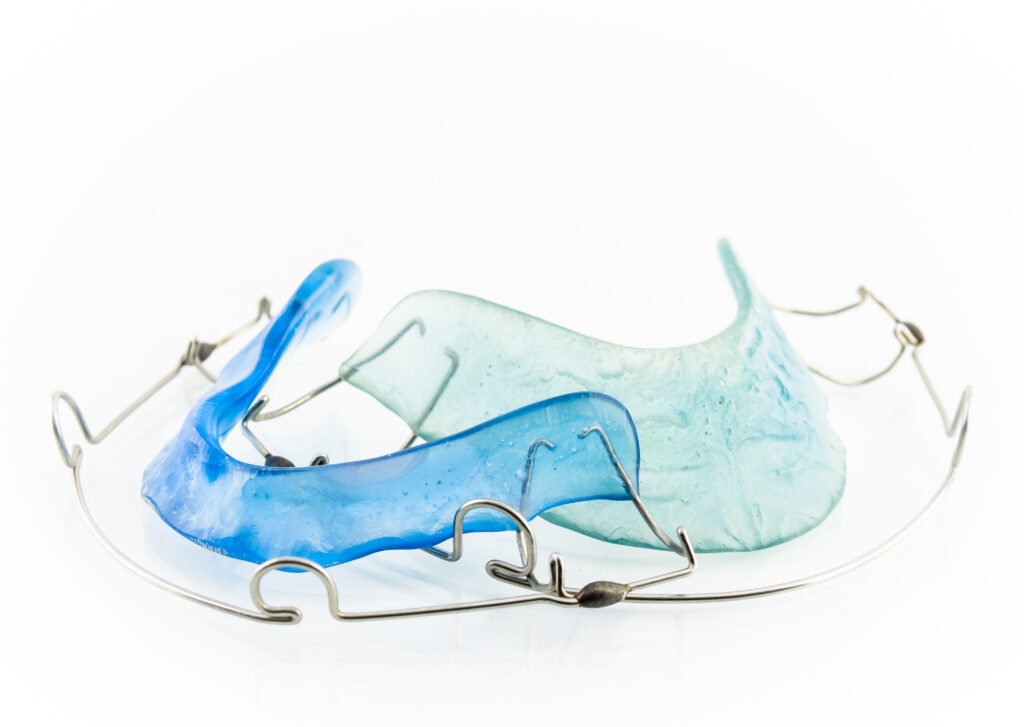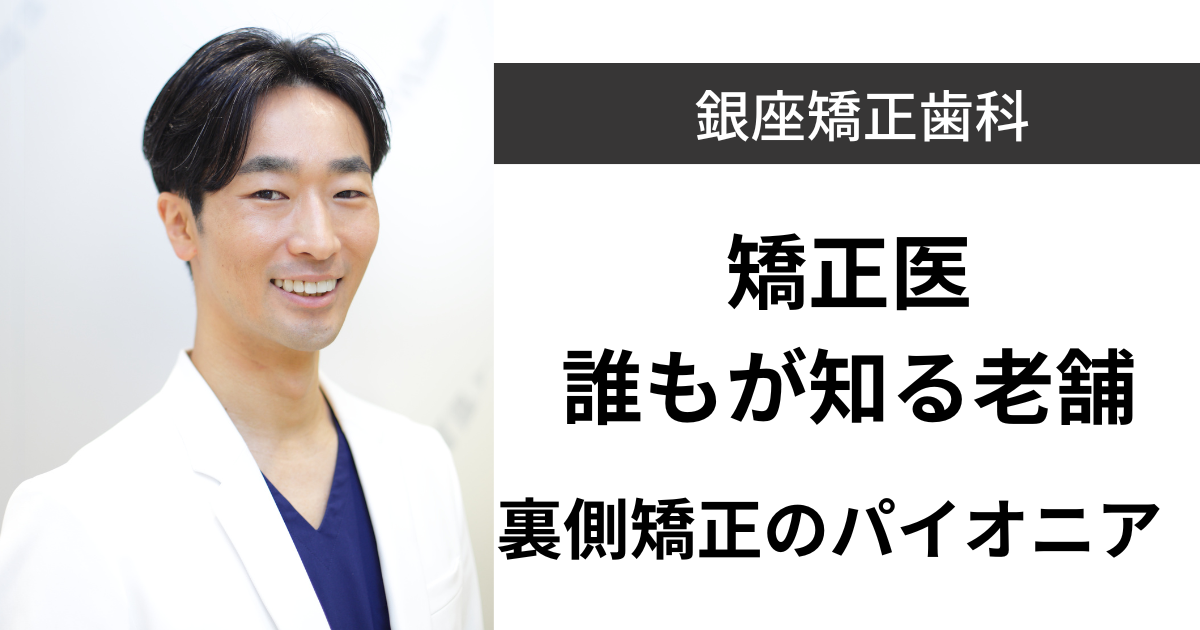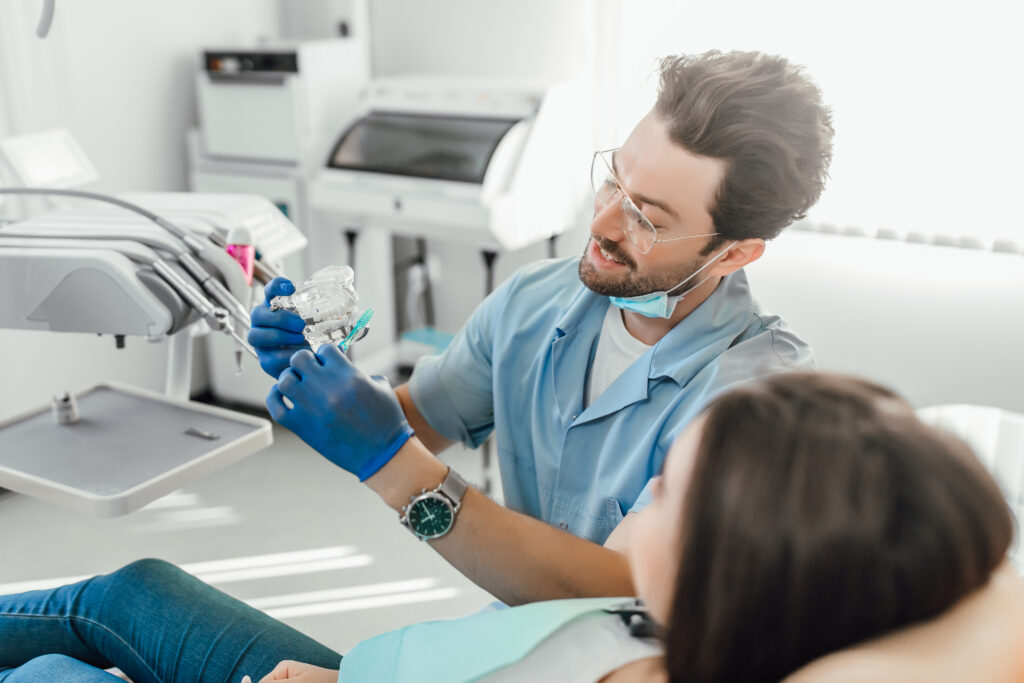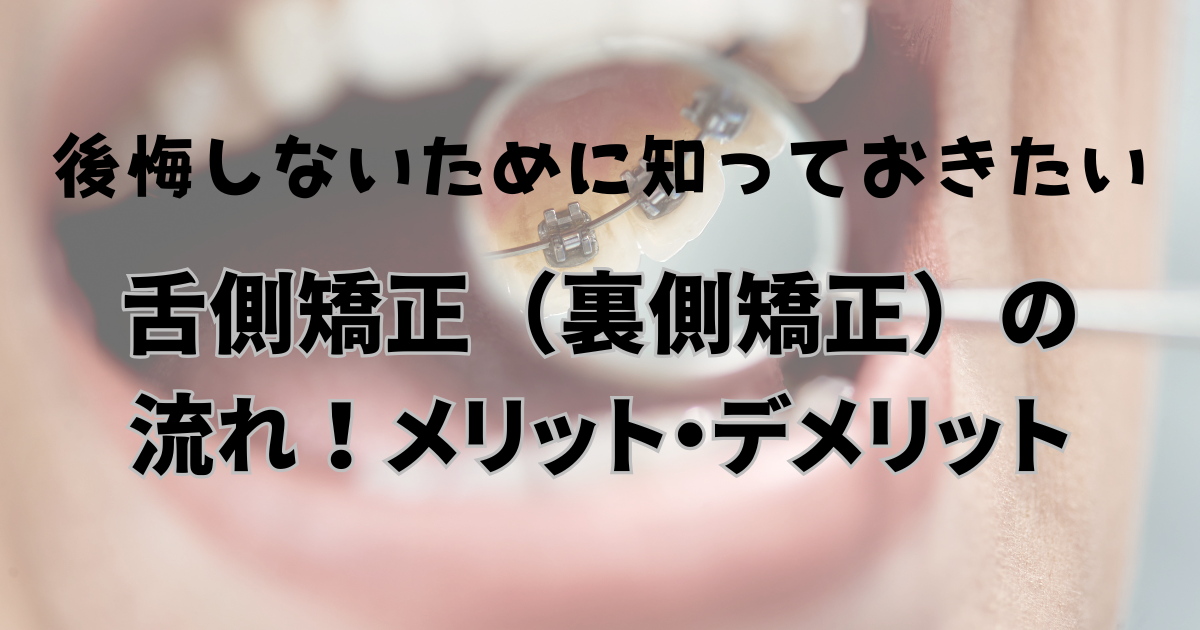
The process of lingual braces (backside braces) you should know to avoid regret! Advantages and Disadvantages
「矯正はしたいけれど、周りにバレたくない…」
そんな思いを持つ方に注目されているのが、歯の裏側に装置を装着する舌側矯正(裏側矯正)It is.
見た目が気になりにくいだけでなく、実は舌側矯正ならではの特徴がたくさんあります。一方で、技術料や調整の難しさなどが原因となり、費用やケア面でのデメリットも存在します。
この記事では、舌側矯正(裏側矯正)のメリットやデメリット、費用相場、治療の流れ、医院選びのポイントなどを詳しく解説します。ご自身のライフスタイルやご要望に合った矯正方法を見つけるため、ぜひ参考にしてください。
What is lingual braces (backside braces)?

Lingual orthodontics is an orthodontic treatment in which orthodontic appliances are attached to the backs of the teeth to move the teeth.
Also known as backside orthodontics or lingual orthodontics.
The most important feature of this treatment is that the orthodontic device is not visible when smiling.
Therefore, it is a popular treatment method for those who want to have orthodontic treatment but are concerned about the appearance.
舌側矯正(裏側矯正)のメリット
矯正装置が見えにくい
表側に装置をつける一般的なワイヤー矯正と異なり、舌側矯正は装置が歯の裏側にあるため、笑ったときに矯正器具がほとんど見えませんThe following is a list of the most common problems with the
虫歯になりにくい傾向
歯の裏側は唾液が多く行き渡り、唾液の殺菌作用や静菌作用により虫歯菌の繁殖が抑えられやすいとされています。ただし、裏側は歯ブラシが届きづらいため、きちんとしたブラッシング指導が必須It is.
舌癖を防ぎ、後戻りを予防
歯が前に出ている「上顎前突」や、上下の前歯が開いている「開咬」の方の場合、Constantly pushing the front teeth with the tongue, or putting the tongue in the gap between the upper and lower teeth.In many cases, the misalignment of the teeth is caused by the tongue habit of
舌の定位置は、口を閉じて上の前歯の付け根の少し後ろ、膨らんでいるところがスポットと呼ばれる舌の正常な置き場所です。リラックスした状態で舌が歯の裏を触っている、舌が歯と歯の間にあるなどスポット以外の場所にある場合、舌が歯を押して力をかけてしまっている可能性があります。
Even if orthodontic treatment is performed and the teeth are aligned beautifully, if this tongue habit is not corrected, the tongue will again exert force on the teeth and there is a high possibility of backsliding.
With lingual braces (backside braces), the orthodontic appliance is attached to the backside, which prevents the tongue from pushing on the teeth and further trains the tongue to place it on the spot.
スポーツ時のリスク軽減
表側矯正だと、激しいスポーツで口の内側を傷つける場合があります。裏側矯正なら、装置が裏側にあるため衝突などで唇や頬を傷つけにくいのもメリットです。
食事中の見た目が気になりにくい
食事中に装置に食べ物が絡まっても、裏側にあるので周囲から見えにくく、会話や食事を楽しみやすいという利点があります。
Treatment flow of lingual orthodontics (backside orthodontics)
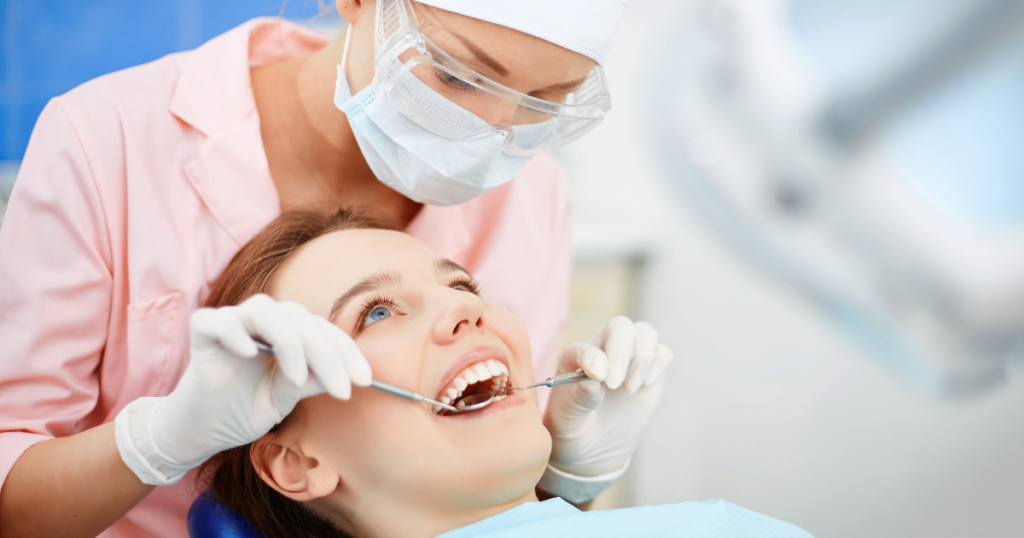
1.Consultation/Inspection
Consultation with a dentist. Perform the necessary examinations for orthodontic treatment.
2. Diagnosis
検査結果をもとに歯科医師が分析を行い診断します。舌側矯正の場合表側矯正と比較して前歯だけでなく奥歯も遠心方向に動きやすいので表側矯正と同じ診断でも治療計画が変わることがあります。舌側矯正の経験が豊富な矯正専門医を選ぶと良いでしょう。
3. Tooth extraction if necessary
If necessary, teeth are extracted according to the results of the diagnosis.
4. Molding for custom-made lingual orthodontic appliances
Since lingual orthodontic appliances are complex, a precise mold is taken and a lingual orthodontic appliance is fabricated based on the model.
※型取り後に虫歯治療を行うと歯の形が変わってしまいます。型取りの前にクリーニングと虫歯治療を終えましょう。
5. Completion and installation of orthodontic appliances
Whether to fit from one jaw or both jaws at once depends on the dentist.
6. Adjustment once a month
Patients will be sent to the hospital to check movement and make adjustments.
The frequency of hospital visits varies depending on the diagnosis.
7. End of treatmentRemove the device.
Remove the orthodontic appliance and wear a maintenance brace.
8. Retention period
The frequency of visits will gradually increase from every month to every few years.
舌側矯正(裏側矯正)のデメリット
High cost
歯の裏側は個人差が大きく複雑な形状のため、オーダーメイドの装置が必要です。製作・装着ともに高度な技術を要するため、どうしても表側矯正より費用が高くなりがちです。
違和感や発音しづらさに慣れるまで時間がかかる
舌側に装置が当たりやすいため、サ行・タ行・ラ行などの発音がしにくくなることがあります。1〜2か月ほどで慣れるケースが多いですが、積極的に発音練習をするとスムーズです。
もし発音に不安がある場合は直接装置が触れにくいハーフリンガルを選択するのも解決策の一つです。
歯磨きが難しい
見えにくい部分に装置があるため、歯ブラシやデンタルフロスを使いこなすコツを習得する必要があります。特に磨き残しがあると虫歯・歯肉炎のリスクが上がるため、ケアは念入りに行いましょう。
舌側の粘膜が腫脹すると歯の動きが遅くなってしまうので洗口剤も併用することもおすすめです。
装置が干渉して噛みにくいことがある
上下の装置が当たって噛みにくさを感じることがありますが、多くの場合、噛み合わせの調整で解決できます。気になる場合は早めに相談しましょう。
装置の干渉は破損の原因となり、治療期間が延びる可能性があります。特に舌側矯正では、特有の歯の動きによる装置の脱落が治療の遅れにつながりやすく、表側矯正よりも影響が深刻です。
対応可能な医院が限られる
舌側矯正は高い技術力と豊富な経験が求められるため、対応できる歯科医院は限られています。医院選びの際は、裏側矯正の実績や症例をしっかり確認するとよいでしょう。
また、舌側矯正の装置はフルオーダーで作成されるため、技工士が院内に常駐している歯科医院もあります。必ずしも院内技工士が必要というわけではありませんが、医院によって治療の進め方が異なるため、カウンセリング時に確認してみるのもおすすめです。
舌側矯正(裏側矯正) vs 他の矯正方法の比較
| 比較項目 | 舌側矯正(裏側矯正) | lingual braces (dentistry) | mouthpiece orthodontics |
|---|---|---|---|
| appearance | ◎(ほぼ目立たない) | △(ワイヤー・ブラケットが見える) | ○(透明素材で比較的目立ちにくい) |
| cost | 高め(80〜150万円程度) | 中程度(60〜100万円程度) | 症例によって幅広い(50〜100万円程度) |
| 装置の快適度 | 舌に当たりやすく、発音に慣れが必要 | 裏側よりは快適だが見た目が気になる | 取り外し可能だが自己管理が必要 |
| 治療期間の目安 | 1年半〜3年程度 | 1年半〜3年程度 | 1〜4年程度 |
| 対応可能な医院 | 少ない | 多い | 比較的多い |
- 表側矯正との違い
最大の違いは“見た目”ですが、費用面でも差が出やすいです。表側矯正は比較的リーズナブルになりやすい反面、ワイヤーやブラケットが目立ちやすいというデメリットがあります。 - マウスピース矯正との違い
マウスピース矯正は取り外し可能でメンテナンスしやすい一方、症例によっては適用できない場合があり、自己管理が必要になる点が難点です。舌側矯正は適用範囲が広い一方、費用面や発音での違和感などは考慮が必要です。
What to watch out for to avoid regrets with backside braces
Choose a dentist who specializes in backside orthodontics.
舌側矯正は技術的難易度が高く、対応できる医院や医師が限られています。実績の豊富な医院を選ぶためには、公式サイトで裏側矯正の症例数や治療実績を確認するのがおすすめです。また、カウンセリング時に詳しく質問し、治療方針を確認するとよいでしょう。
なお、舌側矯正は日本矯正歯科学会の認定医資格とはほとんど関係がなく、大学病院では学ぶ環境が整っていないのが現状です。
「なぜ裏側矯正を選びたいのか」を明確にする
費用や治療期間よりも「装置が目立たないこと」を優先したいのか、それとも「費用を抑えたいのか」など、自分が何を最重視するかを整理しておくとスムーズです。場合によってはマウスピース矯正や表側矯正の方が向いていることもあるため、歯科医師とよく相談しましょう。
ブラッシング指導をしっかり受ける
裏側矯正は装置へのアクセスが難しく、磨き残しが発生しがち。クリニックで丁寧なブラッシング指導を受け、ワンタフトブラシやデンタルフロス、歯間ブラシなどを適切に使いこなしましょう。虫歯が増えてしまっては、せっかくの矯正治療も台無しになりかねません。粘膜の汚れには洗口剤を併用するのが有効です。
発音練習を行う
初期のうちはサ行、タ行、ラ行などの音が上手く発音できない場合があります。意識的に発音練習を行うことで、早く装置に慣れて自然に話せるようになります。日常会話の中で意識するだけでも十分トレーニングになります。
適切な通院ペースを守る
矯正治療は定期的に装置を調整し、歯の動きを確認する必要があります。忙しさや距離を理由に通院を怠ってしまうと、治療期間が長引いたり十分な成果が得られなかったりする恐れがあります。自宅や職場から通いやすいクリニックを選ぶのも重要です。
9. よくある質問(Q&A)
Q1. 舌側矯正と表側矯正、どちらが早く終わりますか?
- 治療期間は個人差が大きく、どちらが早いとは一概に言えません。ただし、医院によっては「舌側矯正のほうが若干時間がかかる」と説明する場合もあります。実際には矯正医の技術や患者さんの歯並びの状態に左右されるため、カウンセリングで詳細を確認しましょう。
Q2. 裏側矯正でも抜歯は必要ですか?
- 叢生(ガタガタ)や前歯の突出度が大きい場合は、表側矯正同様に抜歯が必要なケースがあります。逆に抜歯を行わない非抜歯矯正が可能な症例もあるため、検査結果を踏まえた上で歯科医師と相談してください。
Q3. 矯正中に虫歯になったらどうなりますか?
- 矯正中に虫歯が見つかった場合、早めの治療が必要です。裏側矯正では虫歯によって歯の形が変わると装置の再製作が必要になることがあるので要注意です。部分的にブラケットを外して虫歯治療を行い、再装着する場合もあります。虫歯を放置すると治療期間がさらに延びることもあるので、こまめに定期検診を受けましょう。
Q4. 舌側矯正の費用は一括で払わなければいけないの?
- 多くの矯正歯科では、分割払いやデンタルローンの選択が可能です。高額な治療費を一度に支払うのは難しい場合、カウンセリング時に相談してみるとよいでしょう。舌側矯正の装置代は表側矯正と比較して高額になるので契約前に費用をしっかり確認しましょう。引っ越しなどやむを得ぬ事情での治療中止の際に返金規定があるかなども聞いておいた方が良いでしょう。
Q5. 矯正が終わったらもう通院はしなくていい?
- 装置を外して保定装置を付け始めたあとも、定期的に医院でメンテナンスを受ける必要があります。保定終了の判断も含め、歯科医師の指示に従って通院を続けましょう。
Find the orthodontic treatment method that is right for you!

If you don't know how to find the right method for you, or if finding a dentist seems a little daunting...,
矯正歯科に相談に行く前に現役歯科医師に無料相談できる365dentistfor more information.
Also, please use the open chat on line where you can easily talk about orthodontics.
Twitter、instagramでも矯正にまつわる情報を発信中です。よろしくお願いいたします。
RELATED:What if I want to get my teeth straightened but don't have the money?
RELATED:Summary of entertainers who wore braces

